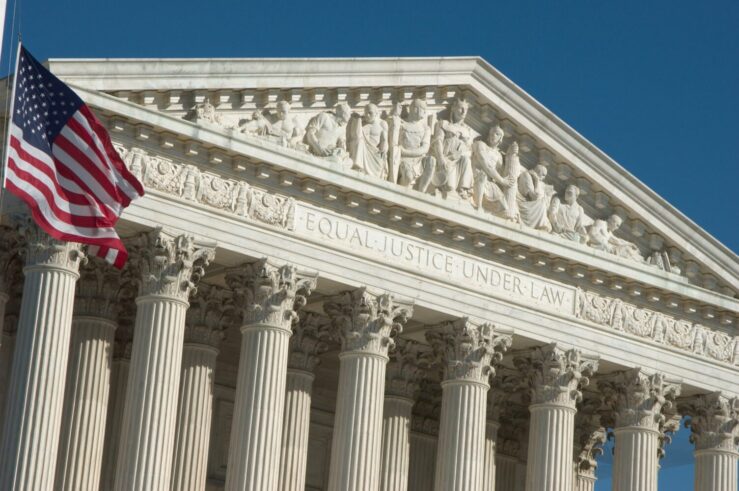The SEC is heralding the $550 million settlement in its suit against Goldman as “the largest penalty ever assessed against a financial services firm in the history of the SEC,” and “a stark lesson to Wall Street firms that no product is too complex, and no investor too sophisticated, to avoid a heavy price if a firm violates the fundamental principles of honest treatment and fair dealing.” Surely the agency had a strong incentive to try to use the Goldman settlement to obscure the memory of Madoff, Stanford and the Bank of America settlement. Meanwhile, today’s NYT concludes its Goldman story with a quote suggesting Goldman got off lightly.
The truth is far more disturbing: the SEC got a big payday in what would have been seen as a strike suit had it been a private securities class action lawyer.
As I said when the suit was filed, there was always a serious problem with materiality. Goldman was accused of not affirmatively disclosing John Paulson’s role in selecting the portfolio that its CDO purchaser IKB bet on. This was supposedly important because Paulson, a notorious bear on the real estate market, was betting against the portfolio. However, the materiality of this non-disclosure was highly questionable given the facts that:
- IKB, a sophisticated player that had engaged in the same kind of deals for its own gain presumably knew the basic risks in the transaction. Paulson’s presence on the other side was of dubious importance given that, at the time, he was a fairly minor player who had been losing his bets, not some proven super-guru with psychic powers.
- The portfolio manager, ACA, and not Paulson, was ultimately responsible for the portfolio’s contents. The WSJ quoted a derivatives expert as saying, “if ACA performed an independent analysis and concluded that the [Abacus] portfolio met ACA’s criteria, I’m not sure what the issue is. * * * One sophisticated market participant thought that the portfolio was a good ‘buy’ and another a good ‘sell’ — that happens all the time in financial markets and is what makes markets.”
- ACA did know about and didn’t disclose Paulson’s involvement and yet was not named in the SEC complaint. As the party charged with the obligation of selecting the portfolio, ACA was a lot closer than Goldman to being a fiduciary with an affirmative duty to disclose.
So why did the SEC sue despite this obvious materiality problem?
- Its own complaint makes clear the strong connection between the suit and the financial reform bill then pending in Congress by alleging that “[s]ynthetic CDOs like ABACUS 2007-AC1 contributed to the recent financial crisis by magnifying losses associated with the downturn in the United States housing market.” Clearly a suit alleging that Goldman, which had made out quite well from the financial crisis, particularly in the AIG bailout, had fraudulently sold the type of securities that helped trigger the crisis.
- A WSJ story bolsters this explanation noting that the SEC had begun its probe on the transaction at least by August 2008, never offered Goldman the opportunity to settle, and had not contacted Goldman from September, 2009 until suddenly moving ahead with the charges during the critical final Congressional deliberations on financial reform.
- The SEC’s usual role is to protect unsophisticated individual investors, not sophisticated market players like IKB. Why did this suddenly change in this case?
- The SEC was under a lot of political pressure to come up with something out of the financial crisis. This case was evidently the best it could do.
- The suit was disposed of as soon as it had no more political use – right after financial reform squeaked through Congress. Even Carl Levin expressed pleasure with the settlement. Why shouldn’t he? He got what he wanted.
And so now we have the settlement. What exactly did Goldman admit? Here it is:
Goldman acknowledges that the marketing materials for the ABACUS 2007-ACI transaction contained incomplete information. In particular, it was a mistake for the Goldman marketing materials to state that the reference portfolio was “selected by” ACA Management LLC without disclosing the role of Paulson & Co. Inc. in the portfolio selection process and that Paulson’s economic interests were adverse to CDO investors. Goldman regrets that the marketing materials did not contain that disclosure.
Well, ok, we knew the marketing materials were “incomplete” because they didn’t disclose Paulson’s role. I am not surprised that Goldman now believes this nondisclosure was “a mistake” which Goldman “regrets.” I would regret any actions that cost me $550 million plus attorneys’ fees.
But is that all there is? What about fraud, which would include an admission that the omission was material? Every disclosure is “incomplete” in some way. The materiality requirement is designed to protect parties from having to dump bewilderingly huge amounts of information on the market.
The WSJ quotes a former SEC enforcement lawyer as noting that dropping the strongest fraud charge is “usually a strong indication the SEC had some doubt whether it could prove intentional fraud.” Well, if that’s true, then what supports the extraordinary fine, of which less than half is going to the supposed victims who bought the securities?
Notably, according to the above WSJ story, the same Republican commissioners who opposed bringing the suit also opposed the settlement:
People familiar with the matter say Republican Commissioner Kathleen Casey questioned the SEC staff Thursday on their decision to abandon the strongest fraud charge and strike a settlement involving a lesser allegation, and given that, how the SEC could justify such a large penalty on a lesser charge. The political split over the case comes at a time when the agency remains under fire for its policing of the financial markets during the financial crisis. The SEC commissioners often split on party lines over policy decisions, but rarely do so on such high-profile enforcement cases. The disclosure of the dispute also raises fresh questions about how strong a case the SEC had against Goldman.
The settlement is disturbing for the additional reason that it leaves costly uncertainty about what duties Wall Street players now have. This issue now becomes very important as the SEC must rule on the fiduciary duties of broker-dealers under Section 913 of Dodd-Frank.
As I testified in a Senate hearing (at 7-8) on whether to impose fiduciary duties on investment bankers:
If the facts are as alleged [in the Goldman complaint] and the non-disclosures are material, Goldman may be held liable under existing law and no new fiduciary duty is necessary to create an obligation to disclose. On the other hand, if Goldman did not breach an existing duty to disclose material facts, there is no apparent justification for holding Goldman liable under any theory, including a fiduciary theory. This is true whether or not Goldman can be deemed to have an interest that conflicts with that of its customer.
More specifically, I asked soon after the complaint was brought:
[W]hat lesson should Wall Street take away from this case? What, exactly, does a bank in Goldman’s position have to disclose to a customer? The identity of another customer on the other side, as the complaint suggests? Only when that customer is somebody like Paulson. What does that mean? Only if the customer has selected the portfolio? What does that mean? Many deals are put together with buyers in mind. Suppose ACA (the collateral manager) assembles the portfolio here with Paulson in mind, and then Paulson says, “that’s for me. Now I’ll invest.” Is this more “material” than having Paulson take the initiative? Suppose they collaborate in putting the portfolio together?
What clues on all this can be gleaned from a settlement that involves a huge amount of money but only an admission of a “mistake”?
The bottom line is that this suit has proved to be no more than a common “strike” suit, no better than the sort of private securities class actions that triggered Congressional reform 15 years ago. Instead of attorneys’ fees, the SEC’s objective appears to have been purely political. In the end it extracted a ransom payment from Goldman so the firm could reclaim its reputation and get back to business.
The court must now review the settlement. It should take a cue from the dissenting Commissioners and reject it because of the puzzling and troubling inconsistency between the amount of the settlement and Goldman’s meaningless admissions. The SEC should have to prove exactly what Goldman did wrong. This will force Goldman to either litigate or make a meaningful settlement. Goldman is hardly an object of pity at this point. In any event, the issues here go far beyond Goldman to, among other things, the proper role and function of the SEC.
It is sad that the SEC not only cannot be trusted to find fraud, but that it can no longer be trusted to litigate and settle cases involving the supposed frauds that it finds. But this is where we find ourselves in the days following “financial reform.”




